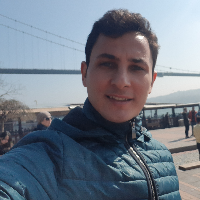Explaining of the concepts and social symbols (social structure) of the Iron Age societies; Case study: Tabriz Blue Mosque cemetery
Social Archaeology is a branch of Archaeology that discusses on data from the perspective of sociology, and studies the structure of past societies and their evolutionary process. Regarding cemeteries, this archeological branch needs more discussion. In the Iron Age, due to the prevalence of the cemeteries in most parts of Iran, discussions about the kind of community, beliefs and religion of the people of that societies are also gaining strength. In these cemeteries, the structure of the graves and objects inside them (grave goods) has concepts and symbols that can resolve some of the existing confusion about the culture of the peoples of the Iron Age. The cemetery of Blue Mosque (locally called Göy Meçid) is one of the most important of these cemeteries. The objects which obtained from this cemetery graves due to the variety in type and the difference in their Abundance, represent the social distinctions of buried persons. Comparison of the structure of graves and of the graves goods indicated that some of them have more valuable and objects than other graves, and as a result their social status is high, while in some graves no objects have been placed. Based on these cases, they can indicated to socially ranked and referred to the criteria used to determine the rank of individuals in their lifetime. Social Archaeology is a branch of Archaeology that discusses on data from the perspective of sociology, and studies the structure of past societies and their evolutionary process. Regarding cemeteries, this archeological branch needs more discussion. In the Iron Age, due to the prevalence of the cemeteries in most parts of Iran, discussions about the kind of community, beliefs and religion of the people of that societies are also gaining strength. Based on these cases, they can indicated to socially ranked and referred to the criteria used to determine the rank of individuals in their lifetime.
- حق عضویت دریافتی صرف حمایت از نشریات عضو و نگهداری، تکمیل و توسعه مگیران میشود.
- پرداخت حق اشتراک و دانلود مقالات اجازه بازنشر آن در سایر رسانههای چاپی و دیجیتال را به کاربر نمیدهد.



